Famicom Fun Facts
Top 10 Fun Facts About the Nintendo Famicom!
The Nintendo Entertainment System was the west’s version of the Nintendo Family Computer – or “Famicom” for short. The NES helped revive a dead industry and became a pop culture phenomenon in America, but the Famicom had its own unique history. This list deals with some of the differences between the two consoles and highlights some of the lesser-known aspects about Nintendo’s revolutionary 8-bit system.
10
The Famicom had 3D Games
1987
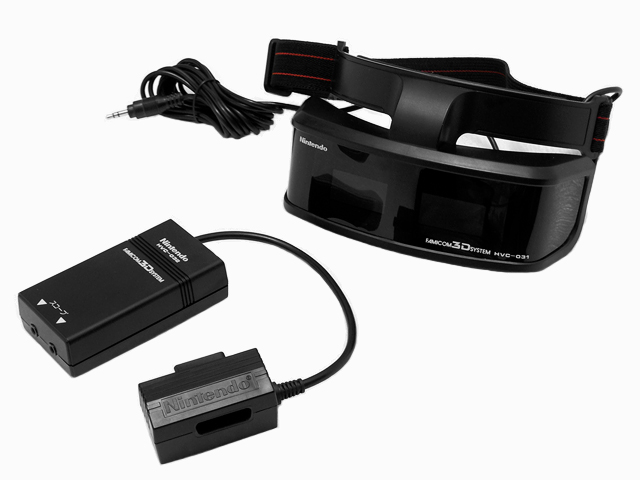
The Famicom 3D System was Nintendo’s answer to the SegaScope 3-D Glasses. Unlike Sega’s peripheral, it was never released outside of Japan. While some NES games like Rad Racer and 3-D WorldRunner supported traditional red-and-blue anaglyph glasses, the Famicom 3D System was a different beast altogether. The device used special goggles that contained a liquid crystal shutter mechanism that opened and closed in sync with video effects on screen in order to create an illusion of depth and provide a 3D effect. Only a handful of games supported the device, however, and the Famicom 3D System was quickly discontinued. Of the six compatible games, only one was made by Nintendo (Famicom Grand Prix II: 3D Hot Rally). Eight years later, Nintendo took another stab at stereoscopic gaming with the release of the Virtual Boy, but the less said about that system the better. They finally struck gold when the 3DS was released in 2011, but the Famicom 3D System was nothing more than an oddity.
9
The Famicom Had a Rough Start
1983
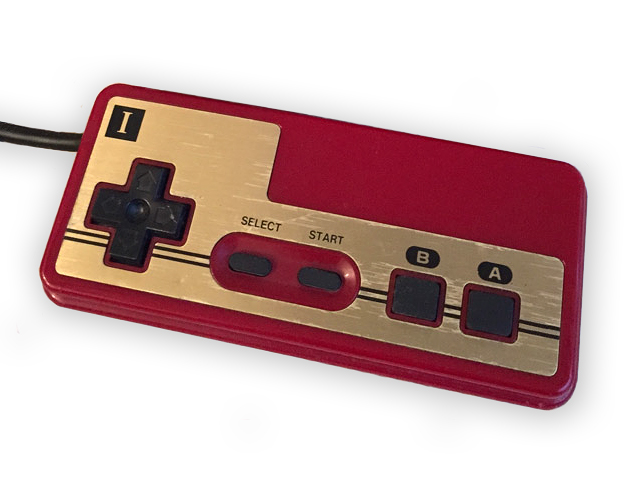
The Nintendo Entertainment System launched in America in October of ’85, and Super Mario Bros. was right behind it. The game was one of the most important titles in history, and it’s a textbook example of a killer app. NES owners had Mario from the beginning, but the Famicom launched in 1983. This means that Famicom owners had to wait nearly two years before they would be called upon to save the Mushroom Kingdom. Nintendo of Japan mostly relied on arcade ports to draw players to their console in the early years. When the Famicom was launched in the summer of ’83, users had to choose between Donkey Kong, Donkey Kong Jr., and Popeye. There was nothing inherently wrong with the lineup, but the newly-minted console had a number of production issues that gave cause for concern. Most notably, a faulty chipset caused initial systems to crash. Another problem was that the controllers used square buttons that had a tendency to get stuck. Following a product recall – in which Nintendo reissued the console with a new motherboard and revised controllers – the Famicom’s popularity soared. By the end of 1984, it had become Japan’s best-selling console and Nintendo had established themselves as the market leader.
8
Many Third-Party Games Used Custom Chips
1987
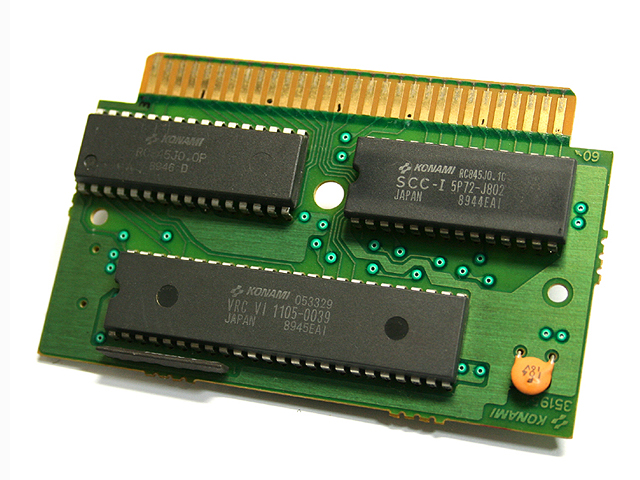
1987
In North American, Nintendo manufactured the lion’s share of the NES cartridges. A few companies (including Tengen and Codemasters) figured out how to get around Nintendo’s copy protection and eventually released their own carts, but most publishers had to rely on Nintendo to supply them with cartridges. In Japan, however, several third-party companies manufactured cartridges for the Famicom. Konami, Capcom, Namco, Bandai, and Jaleco all manufactured their own carts. This allowed companies to develop their own custom chips for their games. For instance, the Japanese versions of Contra and Castlevania III utilized Konami’s VRC chips to create graphical effects that were not seen in their NES counterparts. In the case of Castlevania III, the Japanese version also had three additional sound channels that the NES version didn’t have. Nintendo manufactured their own custom chips for certain North American and European games, but most third-party chips were only found in Japanese carts.
7
Some NES Games House Famicom-to-NES Adapters
1985
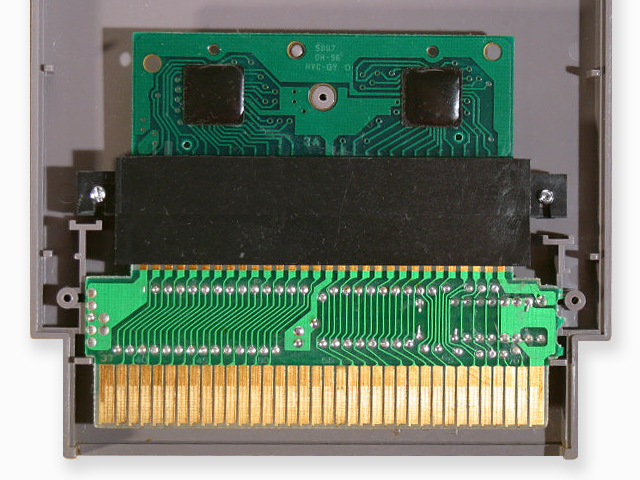
One of the differences between the Famicom and NES was the design of the cartridges themselves. While NES games utilized 72-pin cartridges, the Famicom used smaller 60-pin carts. If you’re looking to play Japanese games in the west, there are several converters available that allow users to plug a 60-pin Famicom game into a 72-pin-based NES. In fact, many people own these converters without even realizing it! When Nintendo was faced with a production overrun of Stack-Up and Gyromite in Japan, they devised a way to re-purpose the extra Famicom cartridge boards and release them in America. By using the same boards in multiple regions, the company was able to offload the unused inventory. Early North American editions of Stack-Up and Gyromite used the original Japanese boards attached to an internal Famicom-to-NES converter. The games themselves are slightly heavier, but they looked just like any other standard NES games. Collectors looking for cheap converters frequently disassemble the cartridges just to obtain the adapter.
6
Famicom Users Could Create Their Own Games
1984
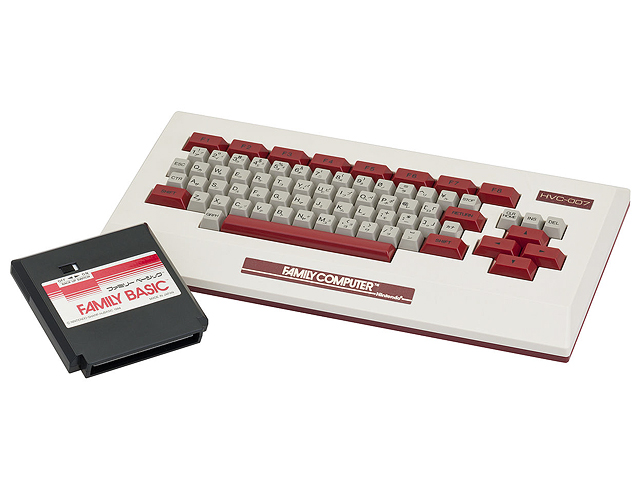
1984
BASIC saw explosive growth in the 1980s. It was one of the few programming languages that was straightforward enough to be used without training, and it was small enough to fit into the microcomputers of the day. The ability to design your own games was a huge selling point for millions of people, so it’s not surprising Nintendo tested the waters. Released in 1984, Family BASIC was a joint venture between Nintendo, Hudson, and Sharp that allowed Famicom users to develop their own games and programs. Family BASIC came packaged with a keyboard and an instructional textbook, and an external data recorder was required for saving. (We’ll talk more about that later.) Several versions of Family BASIC were released in Japan, and Nintendo had initially planned to release the software in America as well. In the end, Nintendo ultimately decided they didn’t want to market the NES as a home computer and Family BASIC was left in Japan. It was probably the right move, but I would have loved to make my own NES games.
5
The Famicom Disk System Was a Big Deal
1986
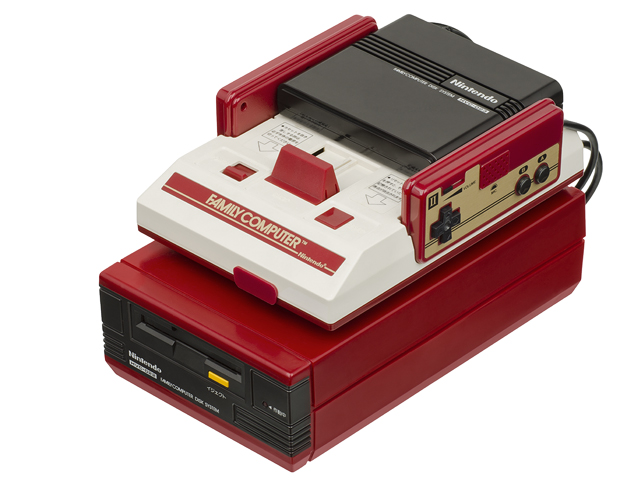
1986
In an effort to curb manufacturing costs, Nintendo released an add-on peripheral called the Famicom Disk System in 1986. This system plugged into the Famicom via the cartridge port and supported proprietary double-sided floppy disks. Games for the Famicom Disk System had several advantages over standard cartridges. They were cheaper to manufacture, they provided more storage space for developers, and they allowed users to save their progress. The FDS was home to tons of text-based adventures and unlicensed games, but its library was by no means limited to quirky titles. In fact, many of Nintendo’s biggest releases from the mid ’80s were initially developed on the FDS – including Metroid, Kid Icarus, The Legend of Zelda, and Super Mario Bros. 2. Third-parties were drawn to the platform too. Konami’s Castlevania, for example, was also originally released on the FDS. Over time, as cartridge prices began to drop and battery technologies became more efficient, the advantages of the Famicom Disk System became less pronounced. The overwhelming worldwide success of the NES also provided incentive to develop games on the cartridge format. Although the Famicom Disk System was never released outside of Japan, it managed to sell an impressive 4.5 million units in its lifetime.
4
Famicom Disk System Games Were Re-Writable
1986
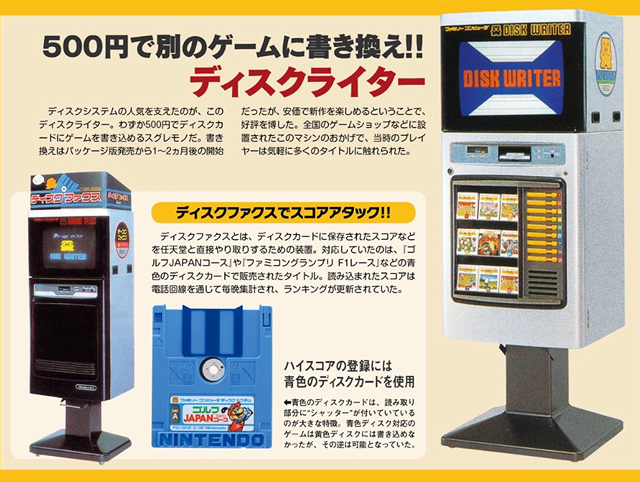
While games for the Famicom Disk System had several obvious advantages over standard cartridges, the format also had many setbacks. The structure of the plastic disk cards allowed debris to get onto the disks, and the games could also demagnetize over time. Not only could gamers lose their save data, but the entire game itself could potentially be erased! Fortunately, games could subsequently be written back onto the disk. In fact, an entirely different game could be written onto the disk! Kiosks called “Disk Writers” were located at shops across Japan, and they allowed customers to download games for a small fee of ¥500. For those not wanting to write over their old games, blank disks could be purchased for ¥2,000 apiece. This had obvious advantages over spending ¥5,000 or more on a new cartridge. However, the publishers and developers soon found that the Disk Writer kiosks were cutting into their profits, so Nintendo phased them out. To their credit, they provided a service to rewrite FDS games until September of 2003.
3
The Famicom Had a Built-in Microphone
1983
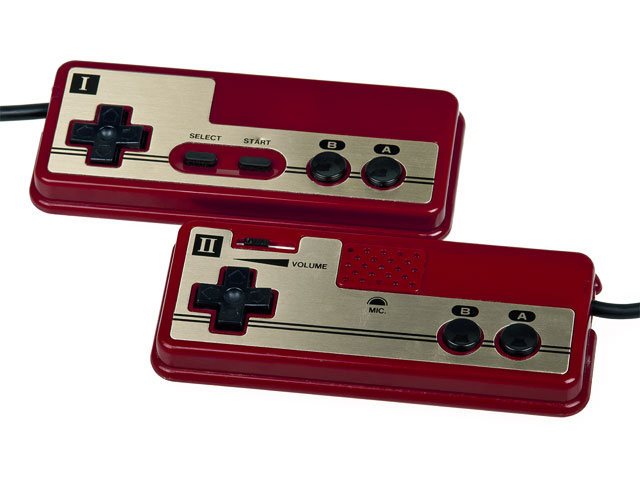
The Famicom’s original design included two non-removable controllers that were hardwired to the console. The first controller was not unlike the standard NES controller, and contained a D-pad in addition to A, B, Start, and Select buttons. The second Famicom controller, however, lacked the Start and Select buttons and, instead, had a microphone and a volume slider. This microphone was only used in a handful of games. Most of them were never released outside of Japan, but The Legend of Zelda was one notable exception. In the North American instruction book for the game, it was explained that the rabbit-like enemy called Pols Voice “hates loud noise.” This made no sense at all. Pols Voice could only be killed by arrows and loud noise didn’t seem to adversely affect them. Fans were left scratching their heads, but the description was actually in reference to the original Japanese version of the game. In Japan, Pols Voice was defeated by yelling into the microphone. The Famicom microphone didn’t set the world on fire, but Nintendo later released microphone peripherals for the Nintendo 64, GameCube, and the Wii. Microphones were also built-in to the Nintendo DS, the 3DS, and the Wii U. They suddenly forgot how to make microphones when the Switch was released and decided to run everything through an external mobile app for some reason.
2
An External Data Recorder Facilitated Game Saves
1984
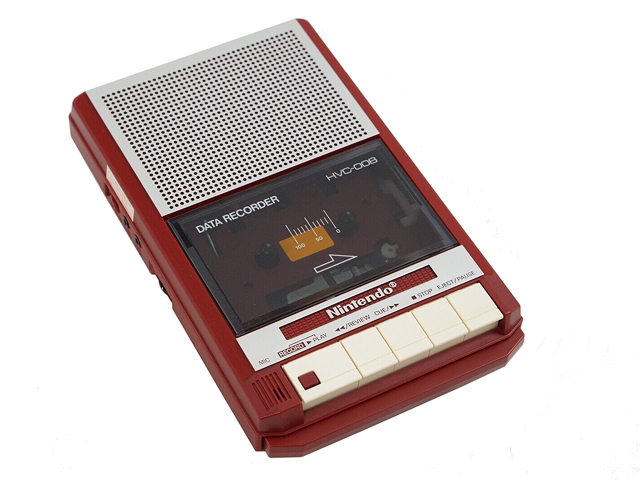
As video games became longer and more complex in the 1980s, it became necessary to give players a way to save their progress. In the case of the Famicom, an obvious solution was inherent in the re-writable Famicom Disk format. Since the Famicom Disk System never made it outside of Japan, Nintendo had to develop alternate methods to allow users to save their progress. Password systems were added to the American versions of Famicom Disk games like Kid Icarus and Metroid, and certain games like The Legend of Zelda came with internal batteries to facilitate saving. This raises the question: “If password systems and internal batteries were initially developed for the North American market, then how did Japanese Famicom owners save their games prior to the release of the Famicom Disk System?” Progress in certain games like Excite Bike, Mach Rider, and Wrecking Crew could be saved via the Famicom Data Recorder. Released in 1984, this device was essentially the Famicom equivalent of the Commodore 64’s Datassette. The device used standard cassette tapes, and could even be used as a conventional tape recorder. The high cost of production and lengthy access times ultimately lead to the creation of the Famicom Disk System.
1
The Famicom was Online
1988
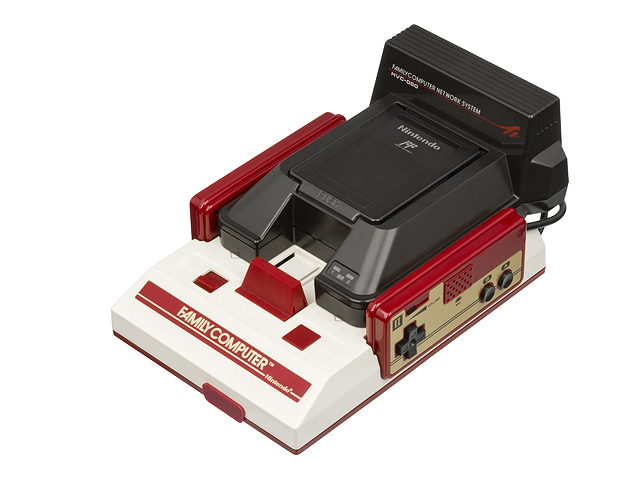
1988
By 1987, the Famicom had been on the shelves for over four years and the PC-Engine had started to eat into its market share. Nintendo President, Hiroshi Yamauchi, saw this as a sign that the Famicom had outgrown its single purpose as a gaming platform, so the company made plans to transform the Famicom into a central terminal for a large-scale network. In an effort to establish themselves as a major player in the telecommunications industry, Nintendo launched the Famicom Network in 1987. One of the first major tests of the network was via a series of “Disk Fax” tournaments. Fans could fax in their scores from any store that was hooked up to the network, and prizes were awarded to the top players after being aggregated in the central computer. In 1988, Nintendo released a device that allowed Famicom users to use their own telephone lines to connect to Nintendo’s network. The modem ran at a modest 2400 bps, but the device allowed users to check the weather, send e-mails, and play a handful of online-enabled games. Users could even use the network to manage their bank accounts and make live stock trades! (The device plugged into the Famicom’s cartridge port, housed a slot for special data cards, and came with a custom controller for banking functions.) Nintendo subsequently released a standalone version of the Famicom Network System called the Dataship 1200 which focused solely on networking and banking elements. The Famicom Network System ultimately failed to catch on, and Yamauchi’s goal of transforming Nintendo into a telecommunications giant was suspended indefinitely. It’s hard to believe, but Nintendo was once ahead of the curve with respect to online functionality.

Do you agree with this list? Let us know what you think by leaving a comment below. Your opinion matters!